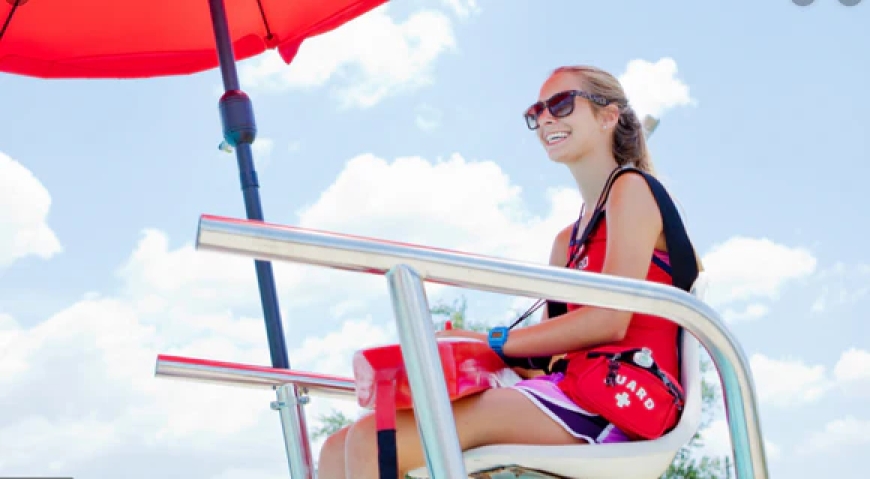Everything You Need to Know About Lifeguard Training
Lifeguards are the silent sentinels of water safety, often overlooked until a crisis arises. Whether at a public pool, a beach, or a water park, lifeguards play a critical role in preventing accidents and saving lives. Behind their vigilant watch lies rigorous training that prepares them not only to respond quickly in emergencies but also to prevent them. This article covers everything you need to know about lifeguard training, from prerequisites and curriculum to certifications and career prospects.

Lifeguards are the silent sentinels of water safety, often overlooked until a crisis arises. Whether at a public pool, a beach, or a water park, lifeguards play a critical role in preventing accidents and saving lives. Behind their vigilant watch lies rigorous training that prepares them not only to respond quickly in emergencies but also to prevent them. This article covers everything you need to know about lifeguard training, from prerequisites and curriculum to certifications and career prospects.
1. Who Can Become a Lifeguard?
Before diving into training specifics, it's important to understand the eligibility criteria. Lifeguard training programs typically require participants to:
-
Be at least 15 or 16 years old, depending on local regulations.
-
Have strong swimming skills (usually demonstrated via a swim test).
-
Pass a pre-course screening, which might include swimming a certain distance (e.g., 300 meters), treading water, and retrieving a 10-lb object from the bottom of the pool.
These prerequisites ensure that trainees have the foundational fitness and water confidence necessary for the rigorous training ahead.
2. Core Components of Lifeguard Training
Lifeguard training is comprehensive, blending classroom instruction with hands-on practice. The training is generally offered by organizations like the American Lifeguard Association(for international candidates). Key components include:
A. Water Rescue Techniques
This forms the crux of lifeguard training. Trainees learn how to:
-
Approach a distressed swimmer safely.
-
Perform surface dives and underwater rescues.
-
Use rescue equipment like buoys and tubes.
-
Execute backboarding for spinal injury victims.
B. CPR and First Aid
Lifeguards are often the first responders to medical emergencies. Training includes:
-
Adult, child, and infant CPR techniques.
-
AED (Automated External Defibrillator) use.
-
First aid for wounds, fractures, burns, and heat-related illnesses.
-
Managing breathing and cardiac emergencies until EMS arrives.
C. Surveillance and Prevention
Proactive observation is just as important as reaction. Lifeguards are trained to:
-
Use scanning techniques to detect risky behavior.
-
Understand the drowning process, often silent and fast.
-
Manage crowd control and enforce water safety rules.
D. Emergency Action Plans (EAPs)
Trainees practice simulations of real-life emergencies:
-
Coordinated multi-guard rescues.
-
Activating EAPs and communicating with team members.
-
Documenting incidents accurately for legal and administrative purposes.
3. Certification and Assessment
At the end of the training, candidates must pass both written and practical exams. Certification typically includes:
-
Lifeguarding Certification (valid for 2 years)
-
CPR/AED for the Professional Rescuer
-
First Aid Certification
Candidates are tested on rescue scenarios, CPR procedures, and theoretical knowledge. Failure to demonstrate proficiency may require retaking the course.
4. Specialized Lifeguard Training
Depending on where a lifeguard plans to work, additional certifications may be necessary:
A. Waterfront Lifeguarding
Ideal for lakes, rivers, and beaches. Training includes dealing with:
-
Currents and waves
-
Use of rescue boards and fins
-
Managing weather conditions and limited visibility
B. Waterpark Lifeguarding
Includes training for:
-
High-speed water slides and lazy rivers
-
Crowd dynamics and ride-specific risks
-
Use of rapid extrication equipment
C. Shallow Water Lifeguarding
Tailored for pools no deeper than 5 feet. Less demanding but still requires CPR, first aid, and rescue proficiency.
5. Duration and Cost
Training programs typically last 2030 hours over the span of a few days to a week. Some institutions offer blended learning options, combining online modules with in-person practice.
Cost: Varies by organization and region but typically ranges between $150 and $400, including manuals and certification fees. Many employers reimburse this cost upon hiring.
6. Physical and Mental Readiness
Being a lifeguard demands both physical endurance and mental sharpness. Trainees should:
-
Maintain strong cardiovascular health
-
Be able to lift and carry individuals out of the water
-
Stay calm under pressure and make quick decisions
-
Communicate effectively with peers and the public
Ongoing in-service training and fitness drills are often required even after certification to ensure skills remain sharp.
7. Job Outlook and Career Path
Lifeguarding is a popular job among students and seasonal workers, but it also offers long-term potential:
-
Opportunities to become a head lifeguard, aquatics supervisor, or safety instructor.
-
Can lead into careers in emergency services, public health, or recreation management.
-
High demand in tourist-heavy areas and warmer climates.
According to the U.S. Bureau of Labor Statistics, employment for lifeguards is expected to grow steadily, especially with increasing focus on public health and recreation.
8. Lifeguarding Beyond the Basics
Lifeguards are more than poolside monitors. They're trained lifesavers, educators, and role models. The training they undergo not only enhances physical skills but instills values like discipline, responsibility, and teamwork. For many, it becomes a foundation for future careers in safety and service.
Finalization
Lifeguard training is a rigorous but rewarding process that equips individuals to protect and save lives in aquatic environments. From water rescues and first aid to emergency coordination and public safety education, lifeguards must master a wide array of skills. If youre considering lifeguarding, know that its not just a summer jobits a position of immense responsibility and impact.


































